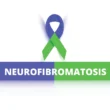Can Neurofibromatosis Qualify You for Disability Benefits?
September 2, 2024
Neurofibromatosis (NF) is a rare genetic disorder that causes tumors to form in the brain, spinal cord and nerves.
NF is usually noncancerous, but it can become malignant. There are three types of this condition. Type 1 usually appears in childhood and is diagnosed at birth or shortly thereafter, while Types 2 and 3 appear in early adulthood. Each type is characterized by its own set of symptoms.
If you have NF which prevents you from being able to hold onto a job, you may be eligible for financial assistance through one of the Social Security Disability programs.
There are two disability programs: Social Security Disability Insurance, which is known as SSDI, and Supplemental Security Income, commonly referred to as SSI.
SSDI pays benefits to you and certain members of your family if you have a disability, and you worked long enough and paid Social Security taxes recently enough.
SSI, on the other hand, is based on financial need. The Social Security Administration (SSA) says, “It is designed to help aged, blind, and disabled people, who have little or no income.” For more on this topic see this blog post from our Chicago disability lawyer team: “Question of the Month: What is the difference between SSDI and SSI?
To determine if you are medically eligible for disability benefits, Social Security has a set of procedures in place. These procedures are published in a handbook known as the “Blue Book,” and it includes a list of various disabling conditions known as “listings.”
Unfortunately, there is no specific listing for neurofibromatosis in the Blue Book. However, your symptoms may meet another listing. For example, if you suffer from severe scoliosis from your neurofibromatosis you could be evaluated under 1.00 Musculoskeletal System (for adults) or 101.00 Musculoskeletal – Childhood.
There also is another way to qualify. You may be eligible for Social Security Disability benefits if you can prove that, due to the limitations of your condition, you are unable to perform any job in the national economy, considering your age, education and past work.
To qualify, you must demonstrate that the symptoms of your impairment prevent you from sustaining full-time competitive employment on a consistent and reliable basis. All qualifying disabilities must be expected to last and keep you out of work for at least 12 months.
To prove that NF prevents you from maintaining full-time employment, you must start with a diagnosis through a doctor’s exam. But a diagnosis alone is not enough to qualify you for benefits.
Your doctor should also explain how your medical conditions limit your ability to work. This is usually done using a form called the “Residual Functional Capacity” (RFC) form. The RFC form is separate from the medical records and helps your doctor to explain your limitations.
To decide whether you qualify for Social Security Disability benefits, the SSA will consider the RFC form along with other medical evidence. For NF, this may include genetic testing and an electromyography (EMG)/nerve conduction study (NCS) to measure electrical pathways in the nerves.
If you have other impairments in addition to neurofibromatosis, you should also include these in your application for benefits. The Social Security Administration must take into consideration all of your impairments when deciding whether you qualify for disability benefits. For more on this subject read our blog article: “Do Multiple Disabilities Improve the Odds of Receiving Benefits?”
If you have a disabling injury or illness and your condition has made it impossible for you to hold a job, contact us at Nash Disability Law for a free evaluation of your situation.
Our disability attorneys can help you navigate the complex SSA disability claims process and guide you on the best path forward. We have offices in Chicago and Palos Hills and we can help you avoid costly disability application mistakes.


